Why is my crepe myrtle not blooming? 5 common reasons and solutions
Crepe myrtle not blooming? Follow these expert tips and get your tree flowering again for a stunning summer display
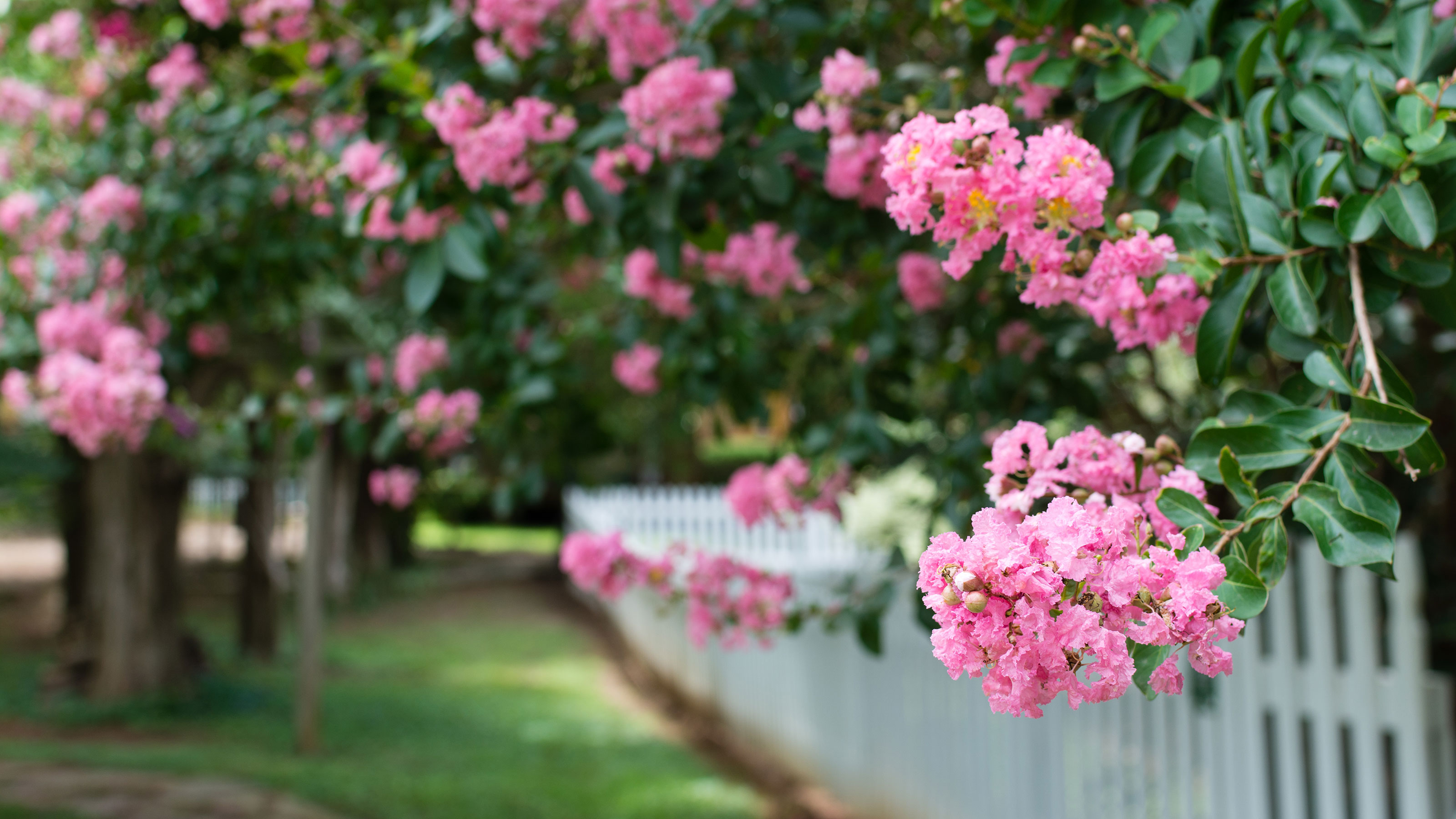

Have you noticed your crepe myrtle not blooming? There could be several reasons why it's not flowering as much as you'd like, but thankfully resolving these issues can be easier than you might think.
Crepe (or crape) myrtles (officially known as lagerstroemia) are one of the most popular flowering trees in the southern United States, but they’re also trending in more northerly regions. Not only are their multiple stems a landscape designer’s dream, there’s plenty of new cold-tolerant varieties to choose from.
Crepe myrtles are mainly grown for their dramatic summer show of frilly crepe-like flowers in vivid pinks, reds and purples that can last up to a jaw-dropping 120 days, but their beautiful fall foliage, sculptural form and peeling bark are awesome too. For these reasons and more, they are considered to be one of the best trees for front yards as well as backyards.
If your crepe myrtle is lacking flower power, or worse, not flowering at all, there are several reasons why this might be the case. In their native south-east Asia, where the climate is hot and humid, crepe myrtles grow to tree-like proportions and flower prolifically, which is why they do so well in the Deep South. To get plentiful blooms with the best color from your tree, pay special attention to amount of sun and moisture the plant is receiving.
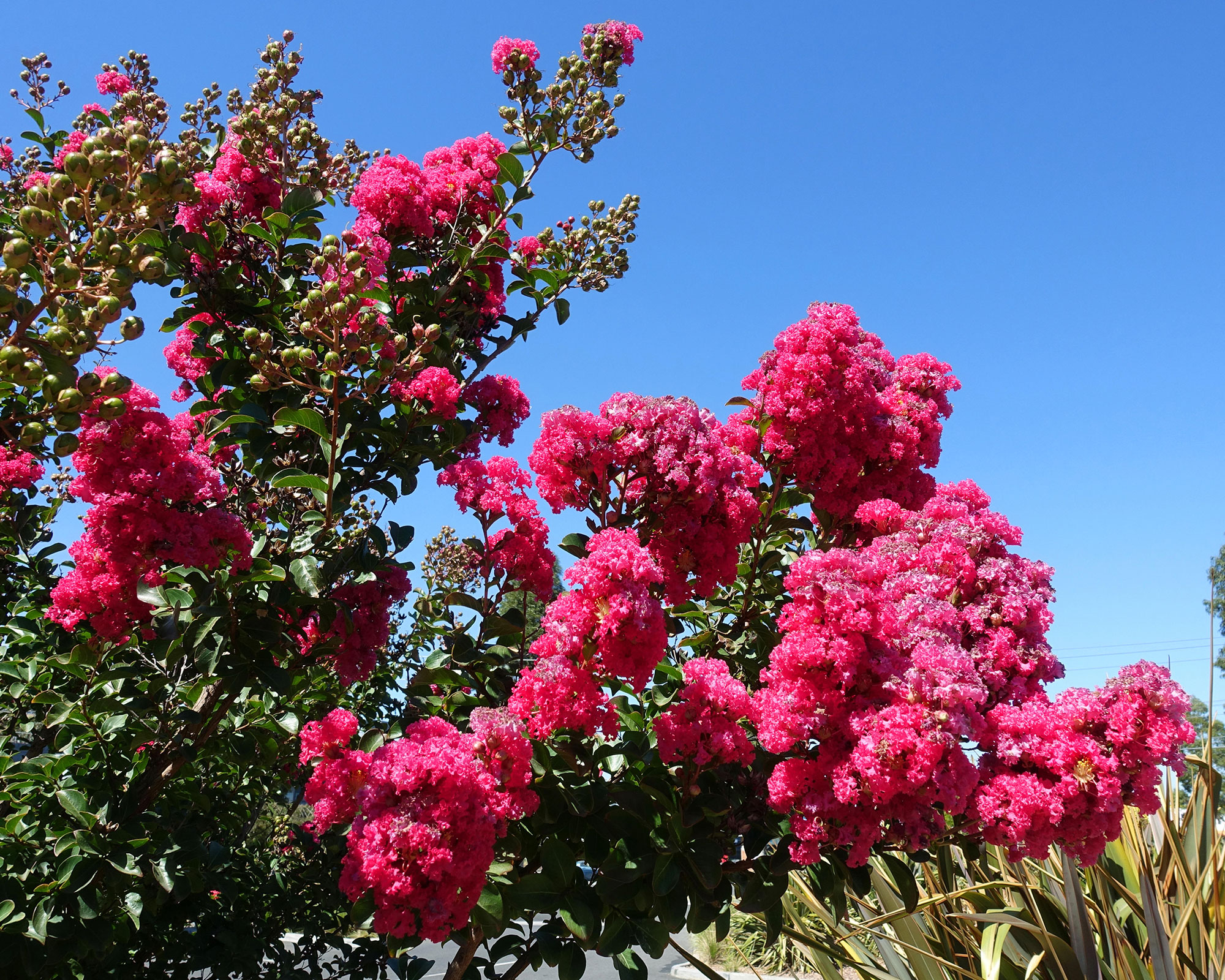
Crepe myrtles can bloom for a long period during summer
Common reasons for a crepe myrtle not blooming
If you're having issues with your crepe myrtle not blooming, take a look at our five common problems below and start diagnosing why yours might not be flowering.
1. Your crepe myrtle isn't getting enough sunshine
Crepe myrtles need a minimum of six hours full sun a day – they bloom poorly in partial shade and are not a good choice for full shade. In hotter regions, they do best where they receive sun in the morning and dappled light in the afternoon.
Although they love sunshine, they don’t love reflective heat, so avoid planting against a pale-colored west-facing wall. Too much dry heat will cause poor flowering as well as leaf scorch.
Lack of sunshine can also be a common reason for morning glory not blooming during its flowering period.
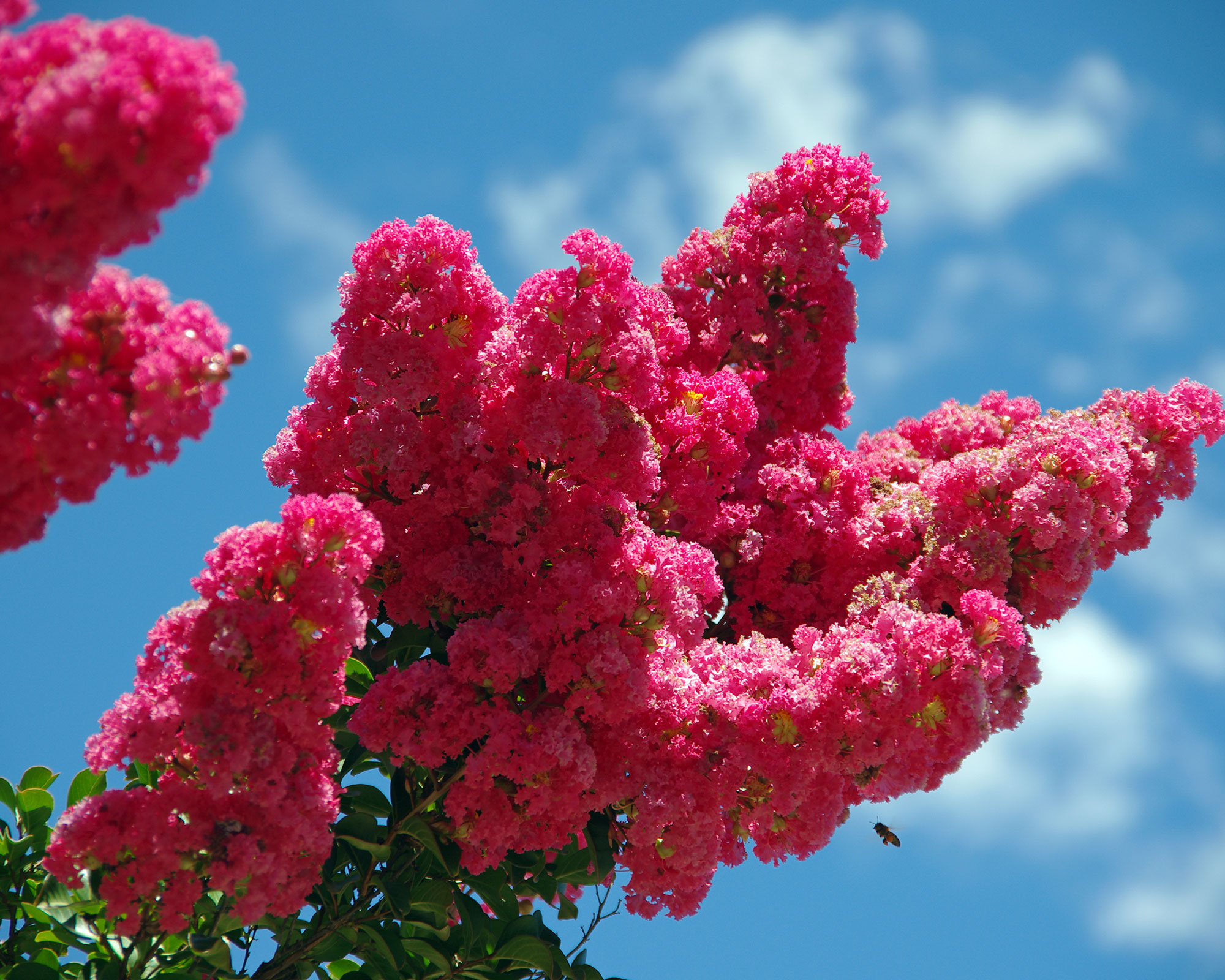
Crepe myrtles receiving plenty of sunshine will bloom best
2. Incorrect moisture levels
Crepe myrtles are more tolerant of drought than they are of wet soil but coping with prolonged drought can be at the expense of flowering ability.
They’re happiest in soil that is consistently moist (but never soggy) especially when they first come into bloom. If the soil that surrounds your crepe myrtle is mostly on the dry side, mulching with composted bark or chippings will help lock moisture into the ground.
Water new specimens deeply and regularly until the rains come, and water established plants during periods of prolonged drought. Aim the hose directly at the root zone and don’t water overhead as this will only encourage fungal disease.
Incorrect watering can also be a reason for hydrangeas not blooming.
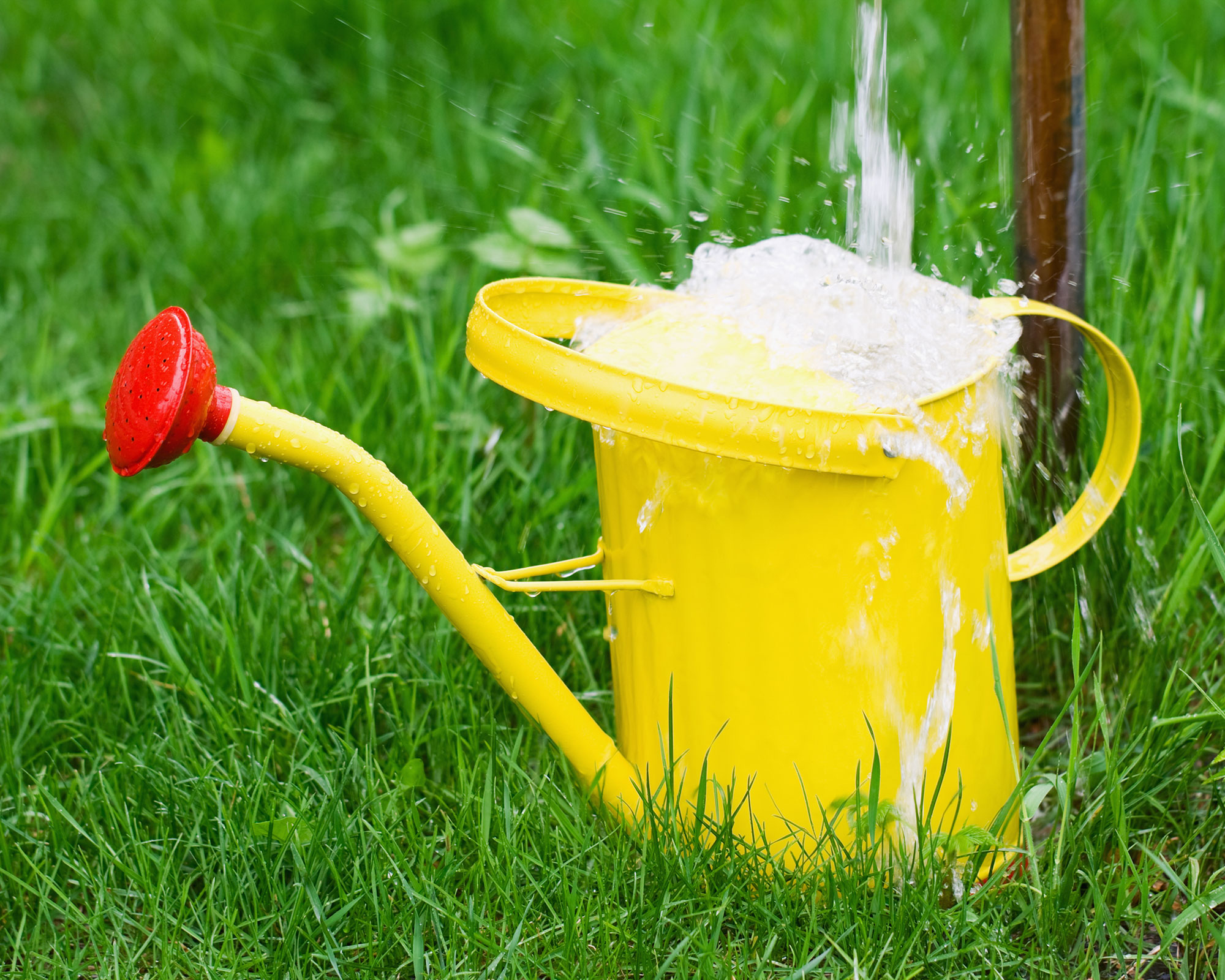
Remember to keep watering your crepe myrtle during an extended period of drought
3. Not feeding your crepe myrtle correctly
If your crepe myrtle is getting plenty of sunshine and is still not flowering, check the soil around the tree. If it’s in a border or a lawn that’s been heavily fertilized, it might be receiving too much nitrogen. This will boost green leafy growth and hold back flower development. Excess nitrogen is also a reason for dahlias not blooming, so keep this in mind if you're also having problems with them not flowering.
The best fertilizer to use on crepe myrtles is one that is high in phosphorus, such as bone meal, which helps to promote root and shoot growth (the flowers grow on new shoots).
They’re happiest in soil types that are neither too acidic nor too alkaline because this ‘goldilocks zone’ of acidity is where phosphorus is most available.
You can easily check the acidity of your soil with a pH soil tester kit, available from Amazon. If your soil is on the acidic side, you can add garden lime to raise the pH and if it’s too alkaline, apply sulphur dust in the winter months.
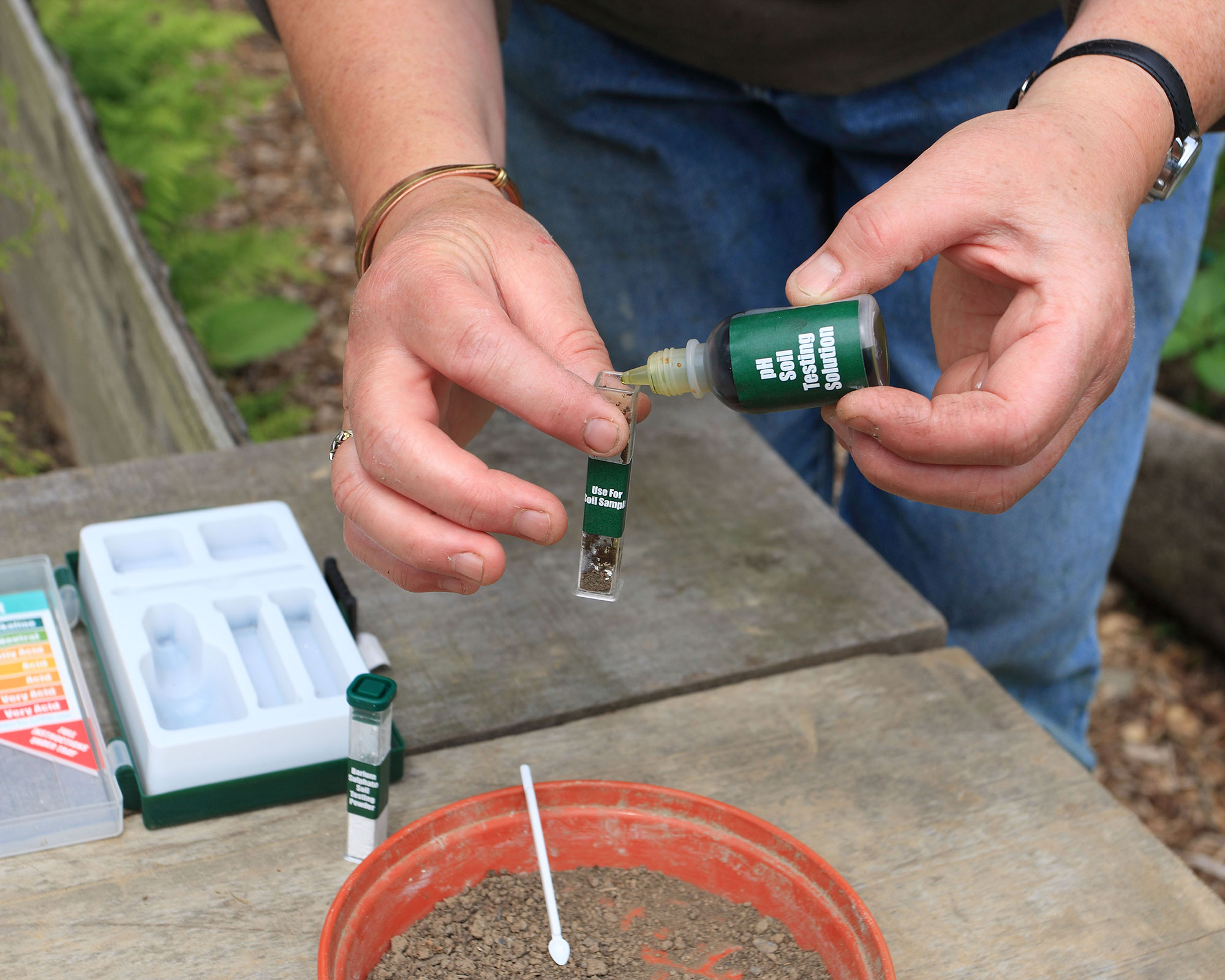
It can useful to check the pH of the soil where your crepe myrtle is growing
4. Pruning crepe myrtles incorrectly
This is one of the main reasons for a crepe myrtle not blooming. It’s a common misconception that trees will flower better if severely pruned. This is why gardeners commit ‘Crepe murder’, the nickname given by gardeners to the common practice of pollarding over-sized crepe myrtles to head-height stumps, resulting in an unsightly butchered look.
'The plant is not harmed but it detracts from the beauty of its winter silhouette,' says Roger Davis, Outdoor Landscape Manager at Longwood Gardens. New whip-like shoots sprout from the stumps in spring, but they’re usually too weak to hold the new flowers, which droop under their own weight.
The only pruning you need to carry out on your crepe myrtle is taking out any dead, diseased, weak or crossing branches in late winter. If you grab your pruning shears, and cut off any new growth in spring or summer, you risk cutting off the developing summer blooms.
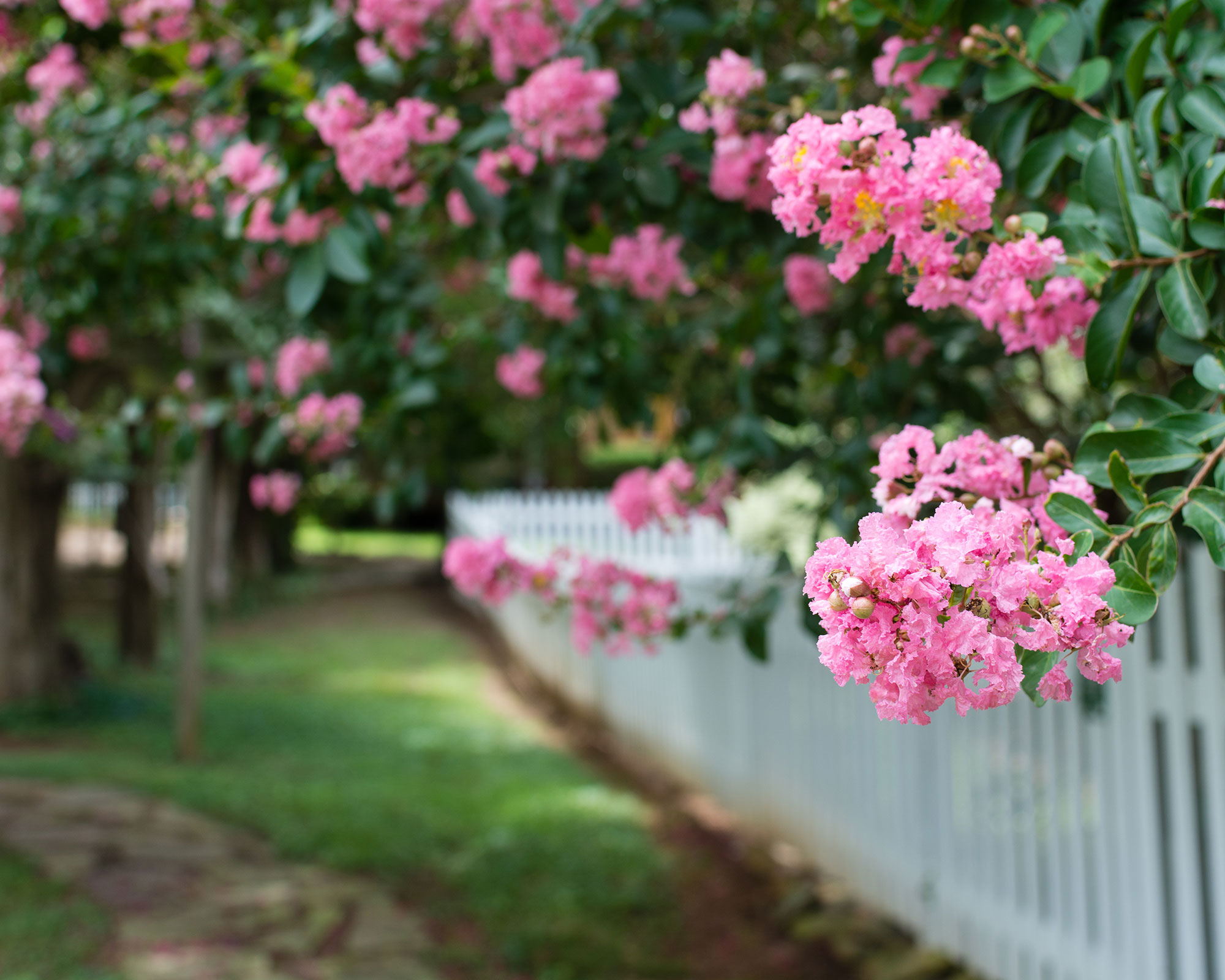
Don't prune your crepe myrtle excessively if you want it to bloom well
5. Not choosing the right crepe myrtle for your location
If you have a mature specimen that has outgrown its spot, it’s probably a better to get a tree surgeon to remove it and start again, rather than hacking it back and losing the beautiful framework that supports the flowering stems.
This time choose an appropriate-sized variety for your setting (check the ultimate height and spread information before buying). 'Selecting the correct variety is important so that you don’t end up with a large variety stuck in a small space,' says Roger Davis.
If you're searching for the best backyard trees, ‘Muskogee’ and ‘Dynamite’ are two excellent varieties for zone 6. ‘Zuni’ and Miami’ are two good mildew-resistant varieties for the southern states.
Generally, crepe myrtles are best suited to USDA zones 7-9 but a few special varieties will be fine in zones 5 and 6 through winter – often these dwarf forms will die back to the ground then sucker from the base to start over in spring. Top plant nurseries Monrovia and Xeraplants are worth checking out as they have carefully selected crepe myrtles that do well in colder regions.

Working at a garden center when she was 23, Sally realised straight away the therapeutic power of being around greenery and nurturing plants. She's horticulturally trained to degree level and has worked on gardening magazines for over a decade. Sally now gardens in Bournemouth, UK, zone 8a (H5).
